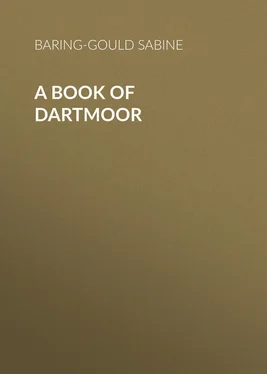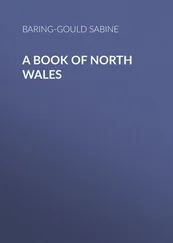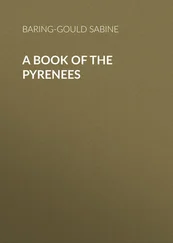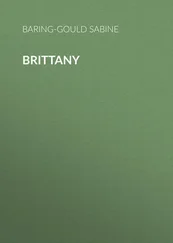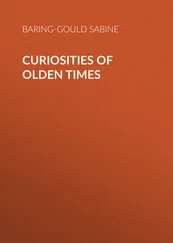Sabine Baring-Gould - A Book of Dartmoor
Здесь есть возможность читать онлайн «Sabine Baring-Gould - A Book of Dartmoor» — ознакомительный отрывок электронной книги совершенно бесплатно, а после прочтения отрывка купить полную версию. В некоторых случаях можно слушать аудио, скачать через торрент в формате fb2 и присутствует краткое содержание. Жанр: foreign_antique, foreign_prose, на английском языке. Описание произведения, (предисловие) а так же отзывы посетителей доступны на портале библиотеки ЛибКат.
- Название:A Book of Dartmoor
- Автор:
- Жанр:
- Год:неизвестен
- ISBN:нет данных
- Рейтинг книги:5 / 5. Голосов: 1
-
Избранное:Добавить в избранное
- Отзывы:
-
Ваша оценка:
- 100
- 1
- 2
- 3
- 4
- 5
A Book of Dartmoor: краткое содержание, описание и аннотация
Предлагаем к чтению аннотацию, описание, краткое содержание или предисловие (зависит от того, что написал сам автор книги «A Book of Dartmoor»). Если вы не нашли необходимую информацию о книге — напишите в комментариях, мы постараемся отыскать её.
A Book of Dartmoor — читать онлайн ознакомительный отрывок
Ниже представлен текст книги, разбитый по страницам. Система сохранения места последней прочитанной страницы, позволяет с удобством читать онлайн бесплатно книгу «A Book of Dartmoor», без необходимости каждый раз заново искать на чём Вы остановились. Поставьте закладку, и сможете в любой момент перейти на страницу, на которой закончили чтение.
Интервал:
Закладка:
The forest is divided into four quarters, in each of which, except the western, is a pound for stray cattle. Formerly the Forest Reeve privately communicated with the venville men when he had fixed a day for a "drift," which was always some time about midsummer. Then early in the morning all assembled mounted. A horn was blown through a holed stone set up on a height, and the drift began. Cattle or horses were driven to a certain point, at which stood an officer of the Duchy on a stone, and read a proclamation, after which the owners were called to claim their cattle or ponies. Venville tenants removed them without paying any fine, but all others were pounded, and their owners could not recover them without payment of a fine.
The Duchy Pound is at Dunnabridge, where is a curious old seat within the inclosure for the adjudicator of fines and costs. It is apparently a cromlech that has been removed or adapted. The Duchy now lets the quarters to the moormen, who charge a small fee for every sheep, bullock, or horse turned out on the moor not belonging to a venville man, and for this fee they accord it their protection.
A good deal of money has been expended on the reclaiming of Dartmoor. Sir Thomas Tyrwhitt, Usher of the Black Rod, was Warden of the Stannary and Steward of the Forest for George IV. when Prince of Wales. He fondly supposed that he had discovered an uncultivated land, which needed only the plough and some lime to make its virgin soil productive. He induced others to embark on the venture. Swincombe and Stannon were started to become fine farm estates. Great entrance gates were erected to where mansions were proposed to be built. But those who had leased these lands found that the draining of the bogs drained their pockets much faster than the mires, and abandoned the attempt which had ruined them. Others followed. Prince's Hall was rebuilt with fine farm buildings by a Mr. Fowler from the north of England, who expended his fortune there and left a disappointed man. Before him Sir Francis Buller, who had bought Prince's Hall, planted there forty thousand trees – such as are not dead are distorted starvelings. Mr. Bennett built Archerton, near Post Bridge, and inclosed thousands of acres. He cannot have recovered a sum approaching his outlay in the sixty years of his tenancy. The fact is that Dartmoor is cut out by Nature to be a pasturage for horses, cattle, and sheep in the summer months, and for that only. In the burning and dry summers of 1893, 1897, and 1899 tens of thousands of cattle were sent there, even from so far off as Kent, where water and pasturage were scarce, and on the moor they both are ever abundant.
Tenements there must be, but they should be in the sheltered valleys, and the wide hillsides and sweeps of moor should be left severely alone. As it is, encroachments have gone on unchecked, rather have been encouraged. Every parish in Devon has a right to send cattle to the moor, excepting only Barnstaple and Totnes. But the Duchy, by allowing and favouring inclosures, is able to turn common land into private property, and that it is only too willing to do.
Happily there now exists a Dartmoor Preservation Society, which is ready to contest every attempt made in this direction. But it can do very little to protect the commons around the forest – in fact it can do nothing, if the freeholders in the parishes that enjoy common rights agree together to appropriate the land to themselves – and for the poor labourer who is able to buy himself a cow it can do nothing at all, for his rights have no legal force.
CHAPTER III
THE ANCIENT INHABITANTS
Abundance of remains of primeval inhabitants – No trace of Briton or Saxon on Dartmoor – None of Palæolithic man – The Neolithic man who occupied it – Account of his migrations – His presence in Ireland, in China, in Algeria – A pastoral people – The pottery – The arrival of the Celt in Britain in two waves – The Gael – The Briton – Introduction of iron – Mode of life of the original occupants of the moor – The huts – Pounds – Cooking – Tracklines – Enormous numbers who lived on Dartmoor – A peaceable people.
Probably no other tract of land of the same extent in England contains such numerous and well-preserved remains of prehistoric antiquity as Dartmoor.
The curious feature about them is that they all belong to one period, that of the Early Bronze, when flint was used abundantly, but metal was known, and bronze was costly and valued as gold is now.
Not a trace has been found so far of the peoples who intervened between these primitive occupants and the mediæval tin-miners.
If iron was introduced a couple of centuries before the Christian era, how is it that the British inhabitants who used iron and had it in abundance have left no mark of their occupancy of Dartmoor? It can be accounted for only on the supposition that they did not value it. The woods had been thinned and they preferred the lowlands, whereas in the earlier period the dense forests that clothed the country were too close a jungle and too much infested by wolves to be suitable for the habitation of a pastoral people.
That under the Roman domination the tin was worked on the moor there is no evidence to show. No Roman coins have been found there except a couple brought by French prisoners to Princetown.
It may be said that iron would corrode and disappear, whereas flint is imperishable, and bronze nearly so. But where is Roman pottery? Where is even the pottery of the Celtic period? An era is distinguished by its fictile ware. A huge gap in historic continuity is apparent. All the earthenware found on Dartmoor is either prehistoric or mediæval, probably even so late as the reign of Elizabeth.
No indication is found that the Saxons worked the tin or even drove their cattle on to the moor. In Domesday Book Dartmoor is not even mentioned. It is hard to escape the conclusion that from the close of the prehistoric period to that of our Plantagenet kings, Dartmoor was avoided as a waste, inhospitable region.
Of man in the earliest period at which he is known to have existed – the so-called Palæolithic man – not a trace has been found on Dartmoor. Probably when he lived in Britain the whole upland was clothed in snow. He has left his tools in the Brixham and Torquay caves – none in the bogs of the moor. Indeed, when these bogs have been dug into, there are not the smallest indications found of man having visited the moor before the advent of what is called the Neolithic Age.
About the man of this period I must say something, as he in his day lived in countless swarms on this elevated land. He may have lived also in the valleys of the lowlands, but his traces there have been obliterated by the plough. First of all as to his personal appearance. He was dark-haired, tall, and his head was long, like that of a new-born child, or boat-shaped, a form that disappears with civilisation, and resolves itself into the long face instead of the long head.
At some period, vastly remote, a great migration of a long-headed race took place from Central Asia. It went forth in many streams. One to the east entered Japan; probably the Chinese and Anamese represent another. But we are mainly concerned with the western outpour. It traversed Syria, and Gilead and Moab are strewn with its remains, hut circles, dolmens, and menhirs identical with those on Dartmoor. Hence one branch passed into Arabia, where, to his astonishment, Mr. Palgrave lighted on replicas of Stonehenge. 5 5 "Hardly had we descended the narrow path, when we saw before us several huge stones, like enormous boulders, placed endways perpendicularly, on the soil, while some of them yet upheld similar masses, laid transversely over their summit. They were arranged in a curve once forming part, it would appear, of a large circle, and many other like fragments lay rolled on the ground at a moderate distance; the number of those still upright was, to speak by memory, eight or nine. Two, at about ten or twelve feet apart one from the other, and resembling huge gateposts, yet bore their horizontal lintel, a long block laid across them; a few were deprived of their upper traverse, the rest supported each its headpiece in defiance of time and the more destructive efforts of man. So nicely balanced did one of these cross-bars appear, that in hope it might prove a rocking-stone, I guided my camel right under it, and then, stretching up my riding-stick at arm's length, could just manage to touch and push it; but it did not stir. Meanwhile the respective heights of camel, rider, and stick, taken together, would place the stone in question full fifteen feet from the ground. These blocks seem, by their quality, to have been hewed from the neighbouring limestone cliffs and roughly shaped, but present no further trace of art, no groove or cavity of sacrificial import, much less anything intended for figure or ornament. The people of the country attribute their erection to the Dārim, and by his own hands too, seeing that he was a giant. Pointing towards Rass, our companions affirmed that a second and similar stone circle, also of gigantic dimensions, existed there; and, lastly, they mentioned a third towards the south-west, that is, in the direction of Henakeeyah." – Palgrave, Narrative of a Year's Journey through Central Arabia , 1865, vol. i p. 251.
Интервал:
Закладка:
Похожие книги на «A Book of Dartmoor»
Представляем Вашему вниманию похожие книги на «A Book of Dartmoor» списком для выбора. Мы отобрали схожую по названию и смыслу литературу в надежде предоставить читателям больше вариантов отыскать новые, интересные, ещё непрочитанные произведения.
Обсуждение, отзывы о книге «A Book of Dartmoor» и просто собственные мнения читателей. Оставьте ваши комментарии, напишите, что Вы думаете о произведении, его смысле или главных героях. Укажите что конкретно понравилось, а что нет, и почему Вы так считаете.
